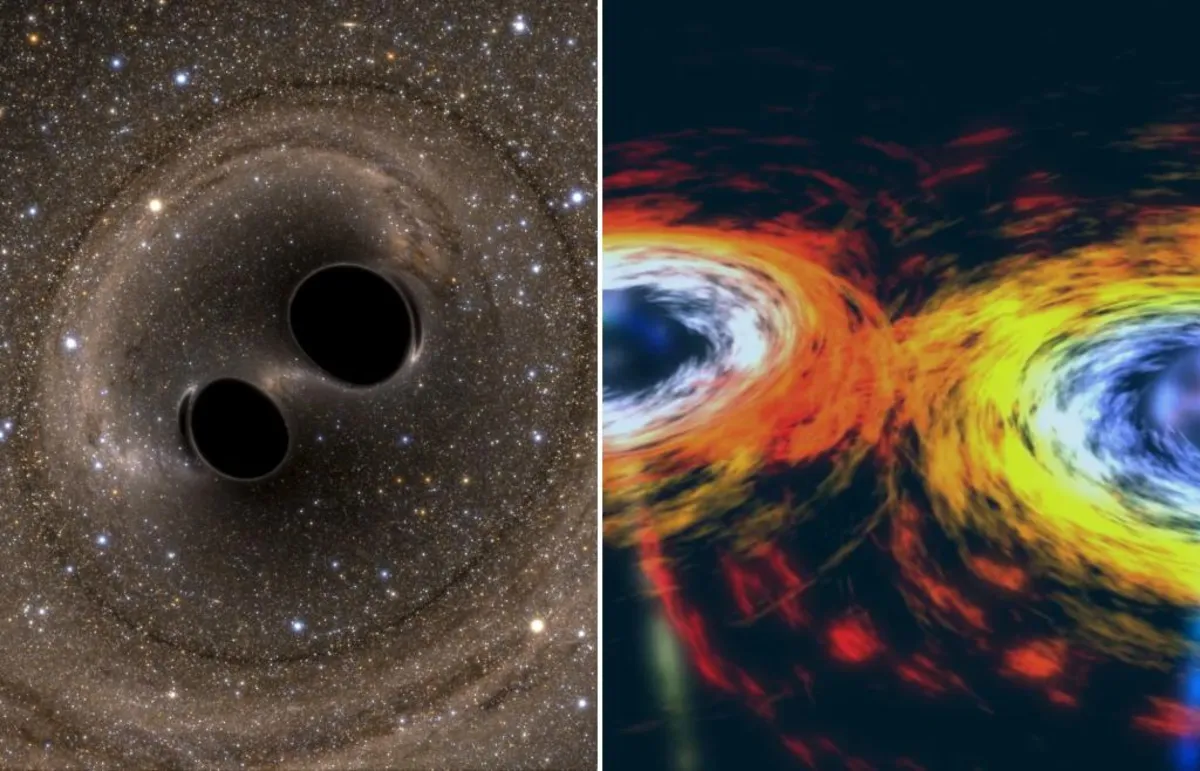
In a groundbreaking study published on October 9 in the Astrophysical Journal, Finnish scientists have provided the first definitive evidence of two black holes orbiting each other. This remarkable finding offers new insights into the nature of these enigmatic cosmic entities. Lead author Mauri Valtonen, an esteemed astronomer at the University of Turku in Finland, expressed excitement over this discovery, stating, “For the first time, we managed to get an image of two black holes circling each other.”
The twin black holes were detected through subtle variations in radio light recorded by telescopes both on Earth and in outer space. The team identified these celestial objects by the “intense particle jets” they emit, a detail highlighted by Valtonen in statements to Live Science. Despite their elusive nature, these black holes can be observed due to the particle jets and the glowing gas that surrounds them.
These particular black holes are locked in a 12-year orbit around the center of a quasar known as OJ287, located approximately 5 billion light-years from Earth. Quasars are incredibly luminous galactic cores; their brightness is generated when a supermassive black hole at the center of a galaxy consumes intergalactic gas and particles. Notably, OJ287 has a mass around 18 billion times that of the Sun, while its smaller companion weighs in at approximately 150 million solar masses, as reported by IFL Science.
Valtonen noted that “Quasar OJ287 is so bright that it can be detected even by amateur astronomers with private telescopes.” What makes OJ287 particularly fascinating is its long-established reputation for harboring not one, but two black holes in a synchronized 12-year orbit. This unique orbital pattern produces a recognizable variation in brightness during that time frame.
Interestingly, OJ287 was first observed accidentally in the 19th century when astronomers aimed their telescopes at a different region of the sky. During that era, the existence of black holes was purely speculative, making the eventual discovery of quasars all the more astonishing. The idea of black holes in orbit was first proposed in 1982 by University of Turku student Aimo Sillanpää, who noted the regular brightness fluctuations over a 12-year cycle.
To validate their findings, the research team utilized a sophisticated radio telescope system that included the RadioAstron, a Russian scientific satellite operational from 2011 to 2019. Valtonen explained, “The satellite’s radio antenna went halfway to the moon, which greatly improved the resolution of the image.” Previously, scientists were limited to Earth-based telescopes, which lacked the necessary resolution to differentiate between the two black holes.
By comparing these high-resolution images with earlier theoretical calculations, researchers successfully identified two distinct features corresponding to the jets emitted by each black hole. This alignment with theoretical predictions solidifies the presence of the second black hole. Nevertheless, researchers noted that there are caveats; the overlapping jets in the images could lead to the possibility of misidentification.
This pivotal discovery not only confirms the existence of binary black hole systems but also enhances our understanding of their behaviors and interactions. As researchers continue to refine their imaging techniques and methodologies, we can expect even more exhilarating findings in the realm of black hole astronomy.